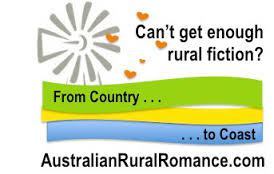Jennifer Scoullar's Blog, page 6
June 26, 2016
Beauty & Lace – Review of Journey’s End

Releasing a new book and getting ready to launch it is a busy time in any writer’s life. 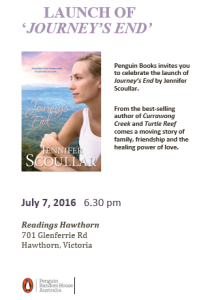 So instead of my usual blog, I’m posting a review from the online magazine Beauty and Lace. Thank you Michelle for reading Journey’s End as part of the Australian Women Writer’s Challenge, and for the five stars! (Winners of the prize draw can be found at the end of the post)
So instead of my usual blog, I’m posting a review from the online magazine Beauty and Lace. Thank you Michelle for reading Journey’s End as part of the Australian Women Writer’s Challenge, and for the five stars! (Winners of the prize draw can be found at the end of the post)
I hereby extend an open invitation for my readers to attend the launch at Readings Hawthorn at 6.30 PM on Thursday July 7th. I will be in conversation with friend and fellow Penguin author Kathryn Ledson. I will be terribly serious and Kath will make jokes. Free wine and nibbles.
Jennifer Scoullar goes from strength to strength and I finished Journey’s End the way I started it, on the brink of tears, though very different types of tears.
Kim Sullivan and her husband Connor have big dreams of their life together and many of them centre on the rundown property Connor inherited, Journey’s End, and finally the time has come to start working on all of their plans. In a few short days Connor will be back from war-torn Afghanistan and they can start making their dreams for Journey’s End realities.
Until the knock on the door that changes everything, the knock on the door every wife and mother fears; the knock that says Connor isn’t coming home.
Two years later Kim decides it is time to put Journey’s End on the market, all of the dreams she had for the property were dreams she shared with Connor and without him it just seems way too hard.
Life has moved on but the family is struggling and the passing of their dog Scout is what broke me in the opening pages; I think because I can relate as I have an old dog of my own who is starting to slow down and I can’t bear to think of life without him. They decide to take a trip to Journey’s End to scatter Scouts ashes and look at what needs to be done to ready the place for sale. My biggest issue here was that I couldn’t understand scattering ashes in a place you’re about to sell, but that’s just me and I am already torn with how to make the decisions when the time comes.
The first trip to Journey’s End is heartbreaking for Kim, the family have moved out of the family home so they don’t have the constant reminders at every turn; once they get to Journey’s End that’s exactly what they find. It’s like having to let go all over again. But there is something comforting about the place and before long Kim decides to take 12 months off work and go to Journey’s End to get the place well and truly ready for sale and give the children a change of scenery.
As is always the case in Scoullar novels the surroundings, and the animals, play as large a role in the story as the people.
Kim Sullivan and her children need to heal, they need to learn to live again and they need to learn to live with their grief, rather than just keep on with the one foot in front of the other existence.
Journey’s End also needs to heal, it’s been left neglected for too long and there is much work to be done to bring it back to a thriving property. The property has a conservation covenant on it, meaning that it can’t be logged, and it will affect the type of buyer that’s attracted. The neglect of the property has attracted an endless stream of wild animals, the ones that are actually more looked upon as pests in farming areas. Lots of wild rabbits, foxes, kangaroos, wallabies, goats and they even see a couple of brumbies on their first visit.
Much of the story centres on the wildlife work done by Kim’s neighbour Mel, and in turn the Sullivans as they take on the overflow and always have a menagerie of orphaned animals around, and the regeneration of Journey’s End. The replanting, the controversial pest eradication program and the slow fixing up of the house.
Alongside the story of the property is the reawakening of Kim, the blossoming of Abbey and the calming of Jake. The change of scenery is good for the family; they meet new people and have a totally different set of experiences in the small town of Tingo than they would in Sydney.
The story isn’t all about the Sullivans, there is also the mysterious Taj; a relative newcomer to Tingo who generally keeps to himself but is a great handyman around town.
The story is narrated in the third person but alternates, not evenly or regularly, between Taj and Kim.
Taj has a haunted past and his grief and loss is evident in his eyes, though no-one in town really knows his story. Jake takes an immediate dislike to him and Abbey is the complete opposite being drawn to him. Taj is not only a talented handyman but also has a way with animals. He works on the house and yards for Kim to help ready it for sale, and they begin to also work together on Kim’s plans for the property and rewilding the bushland.
Ben is the real estate agent looking after the sale of Journey’s End and he forms a friendship with Kim. He is charming and charismatic, perhaps a little too much, and Jake takes an immediate shine to him, though Abbey never warms to him. The reactions of the kids illustrate the sharp contrast between the two men in the story.
The characters are beautifully drawn, they are realistic and believable; their pain is palpable and their reawakening is a joy to watch. Scoullar has done another stellar job of creating fantastic characters that complement one another and make you feel… even if that feeling is one of anger.
The small town of Tingo and its characters are an interesting mix and help complete the picture when it comes to the more controversial plans Kim puts into place on her property.
Journey’s End has a little bit of everything, it’s a little bit suspense, a little bit romance, a lot of regeneration and a great deal of environmental awareness. Love, learning to laugh again, friendship, family and living with loss are all major players in this engaging new Scoullar novel.
Every Jennifer Scoullar novel I have read helps bring awareness to an environmental issue and I have loved every one of them, and now I need to go and track down the one or two that I have missed along the way.
Journey’s End is book #30 for the Australian Women Writer’s Challenge 2016
Congratulations to jay hicks and Janine K for each winning a signed copy of Journey’s End. I shall email you soon for your postal address[image error] Thank you to everyone who commented.

June 12, 2016
Release Of ‘Journey’s End’ & Giveaway
The time has come for some shameless self-promotion – the release day for my new novel, Journey’s End. Leave a comment about your favourite wild place to go in the draw for two signed copies (Aust & NZ addresses only) Contest ends Sunday 26th June.
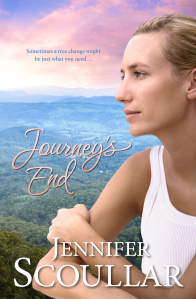 When Sydney botanist Kim Sullivan and her husband inherit Journey’s End, a rundown farm high on the Great Eastern Escarpment, they dream of one day restoring it to its natural state. Ten years later however, Kim is tragically widowed. Selling up is the only practical option, so she and her children head to the mountains to organise the sale. The last thing Kim expects is for Journey’s End to cast its wild spell on them all.
When Sydney botanist Kim Sullivan and her husband inherit Journey’s End, a rundown farm high on the Great Eastern Escarpment, they dream of one day restoring it to its natural state. Ten years later however, Kim is tragically widowed. Selling up is the only practical option, so she and her children head to the mountains to organise the sale. The last thing Kim expects is for Journey’s End to cast its wild spell on them all.
The family decides to stay, and Kim forges on with plans to rewild the property, propagating plants, and acquiring a menagerie of native animals. But wayward wildlife, hostile farmers and her own lingering grief make the task seem hopeless. That is, until she meets the mysterious Taj, a man who has a way with animals. Kim begins to feel that she might find love again. But Taj has his own tragic past – one that could drive a wedge between them that cannot be overcome …
I’m passionate about Australia’s flora and fauna and its magnificent wild places. There’s a world-wide movement afoot to reclaim territory for wilderness – rewilding. We’ve already lost so much. Conservationists are now trying to reverse this harm by restoring habitats to their natural state. I explore this fascinating notion in Journey’s End. Most people have been aware at times of some primal core within them, which longs to break free of suburbia. Longs to escape deep into the desert, or high into the mountains. My main character Kim Sullivan acts on this instinct and I’m proud of her! Read the prologue to Journey’s End below.
Prologue
The day Kim Sullivan’s world ended was disguised as an ordinary Wednesday. She took the kids to school and did some shopping. She came home, put on the washing machine and went to make her bed. Scout poked his head out from behind the pillows. Kim picked up the old border terrier, and set him down on the carpet.
He whined, stiff legs scrabbling to climb back up. On the third attempt he succeeded and nestled down on Connor’s jumper, the one Kim slept with when he was away. His smell was in the weave. Scout had always been more Connor’s than hers. ‘We won’t have to make do with his jumper for much longer.’ Kim sat down beside the dog. ‘We’ll have the real thing home on Sunday.’
Home on Sunday. After years of deployments in war-torn Afghanistan, Connor would be home – home for good. It was hard to believe, a prospect too sweet to be true.
‘Daddy will be back from the army in four sleeps,’ Abbey had said on their way to school that morning, counting out the days on her fingers. ‘It’s going to be my show and tell. Mummy, do you think it will be good enough?’
‘The best ever.’
Jake had rolled his eyes. ‘What would preps know about the army? And Dad’s job is supposed to be a secret. You shouldn’t go telling everybody, Abbey. The Taliban might hear.’
‘I don’t think the Taliban will be listening to Abbey’s show and tell.’
Jake hadn’t looked convinced. He worried so much about his father.
Well, he didn’t have to worry anymore. In four sleeps Connor would be home and their new life would begin.
Her phone rang from the bedside table. Of course – that’s what she’d come in to find in the first place. ‘Daisy, what’s up?’
‘How about I pick your kids up from school this arvo, bring them back to my place for an early tea? Grace wants to show Abbey her new rabbit, Stuart’s been bugging me about having Jake over, and you’re always so tailspin busy before Connor gets back. What are you doing now? Cleaning behind the fridge?’
Kim laughed. She’d already done that. ‘Thanks. I want everything to be perfect. You know how it is when they come home.’
‘Steve’s lucky if I make the bed,’ said Daisy. ‘What’s the point, when the first thing we do is mess it up again? And I’m too scared to look behind our fridge. I think there’s a dead mouse.’
Kim shifted her feet as a flush of heat passed through her. Daisy was right. Nothing came close to come home sex, or waking up in Connor’s arms for the first time in months, or going to sleep knowing the man she loved was safe beside her. She sank down on the bed, dizzy with wanting.
‘Are you lot still heading off to your bush block?’ Daisy asked.
‘Just as soon as we can get away.’
‘Sounds like heaven,’ said Daisy.
That’s exactly what it would be.
Connor’s grandfather had left him two hundred hectares of land at Tingo, six hours north of Sydney, high on the Great Escarpment. Journey’s End. A property in his family for generations, although nobody had lived there for years. She could see it now. Stunning views across the mountains of Tarringtops National Park. Sharing a beer with Connor on the farmhouse porch, reconnecting. Watching the kids play on the old willow peppermint, its broad low branches just made for climbing. Talking about their future.
They had grand plans to restore the rundown farm to its natural state. It had been a shared dream since their first visit there, though more hers, perhaps, than Connor’s. She was the botanist. He was more interested in the wildlife.
But Kim had quickly fallen pregnant. Connor was promoted and went on the first of many overseas postings. And it had remained just that – a dream. When Jake was two, she started teaching horticulture at Campbelltown College, and then Abbey came along. Their lives were too full, too busy. ‘One day we’ll take off,’ Connor would say. ‘Use our saved leave and just go bush.’ That day was almost upon them.
Kim wouldn’t have heard the knock if Scout hadn’t barked. She glanced in the dressing-table mirror, running her fingers through her blonde hair then smoothing her shirt. Good enough. She opened the front door and blinked in surprise. Captain Blake stood on the step. He looked different somehow: sallow and slump-shouldered. Scout appeared at her heels, yapping in short, angry bursts.
‘Is Connor home early?’ she asked. ‘Should I pick him up from the airport?’
He shook his head. A cold stone formed in her chest and slipped down to her belly. ‘Is he all right?’
‘Let’s talk inside.’ He rubbed his forehead with his fingers, and she knew. The terrible truth showed in his swift breath, his guarded eyes, how he spoke – the fact he was there at all.
Kim put a hand to her heart. Panic claimed her, like she was walking too close to a cliff. Pain too. Her legs gave way, while white noise drowned out the Captain’s voice. Not Connor. Not her brave, handsome, clever Connor. Her best friend, her lover, her soulmate. What about their life together, their future? What about Abbey and Jake? She swayed alarmingly as the ground lurched beneath her. What about her? How would she live?

June 5, 2016
World Environment Day

 Today is World Environment Day, and don’t we need one! A World Environment Year would be more useful. Or maybe a century? This year’s theme for WED – Go Wild for Life – encourages us to celebrate all those species under threat and take action of our own to help safeguard them for future generations. This can be about animals or plants that are threatened within your local area as well as at the national or global level – many local extinctions will eventually add up to a global extinction!
Today is World Environment Day, and don’t we need one! A World Environment Year would be more useful. Or maybe a century? This year’s theme for WED – Go Wild for Life – encourages us to celebrate all those species under threat and take action of our own to help safeguard them for future generations. This can be about animals or plants that are threatened within your local area as well as at the national or global level – many local extinctions will eventually add up to a global extinction!
 To celebrate this special day, I went for a nature walk here at Pilyara. And look what I found? A group of these gorgeous red-spotted Amanita muscaria toadstools. Every child has made their acquaintance via countless illustrations in fairy tale books. They’re a classic symbol of enchanted forests and magical groves – where elves, gnomes and witches dwell. And they’re not a great candidate for an Environment Day blog – as they are an introduced species. But I still love seeing them.
To celebrate this special day, I went for a nature walk here at Pilyara. And look what I found? A group of these gorgeous red-spotted Amanita muscaria toadstools. Every child has made their acquaintance via countless illustrations in fairy tale books. They’re a classic symbol of enchanted forests and magical groves – where elves, gnomes and witches dwell. And they’re not a great candidate for an Environment Day blog – as they are an introduced species. But I still love seeing them.
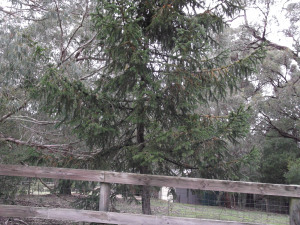 Amanita muscaria is found on the ground and in leaf litter, mainly under exotic conifers and broadleaved trees. I found these ones under a pine tree that we planted after it served as our Christmas tree for many years. That was two decades ago now. I presume the spores survived in the pot.
Amanita muscaria is found on the ground and in leaf litter, mainly under exotic conifers and broadleaved trees. I found these ones under a pine tree that we planted after it served as our Christmas tree for many years. That was two decades ago now. I presume the spores survived in the pot.
Finding these toadstools is of some 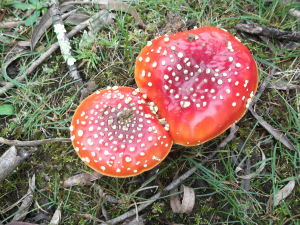 concern, as they’re extending their range into native forests. This spread will change the ecosystem, and could cause the decline or elimination of some native fungi. Amanita muscaria is native to conifer and deciduous woodlands of the Northern Hemisphere. Although classified as poisonous, reports of human deaths resulting from eating it are extremely rare. After
concern, as they’re extending their range into native forests. This spread will change the ecosystem, and could cause the decline or elimination of some native fungi. Amanita muscaria is native to conifer and deciduous woodlands of the Northern Hemisphere. Although classified as poisonous, reports of human deaths resulting from eating it are extremely rare. After 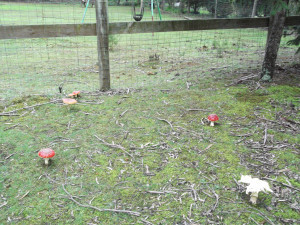 parboiling, which weakens its toxicity and breaks down the toadstool’s psychoactive substances—it is eaten in parts of Europe, Asia, and North America. I don’t think I’ll give it a go!
parboiling, which weakens its toxicity and breaks down the toadstool’s psychoactive substances—it is eaten in parts of Europe, Asia, and North America. I don’t think I’ll give it a go!
On a more bookish subject, I’m excited to announce I have a new contract with Penguin Random House for the historical I’m writing. It will be available next year. And this year’s release, Journey’s End, is now available as an eBook. The print version will be in the shops on June 13th. Exciting times[image error]

May 24, 2016
Versions Of History
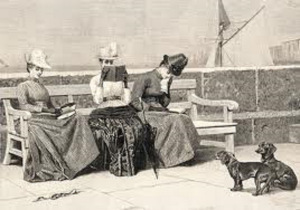 It’s time for some writerly chit-chat with author and writing mentor Sydney Smith. This month we talk about the power of historical fiction.
It’s time for some writerly chit-chat with author and writing mentor Sydney Smith. This month we talk about the power of historical fiction.
JENNY –
Napoleon once said, ‘What is history, but a fable agreed upon?’ Standard history books don’t tell the truth. Absolute truth is beyond reach. The Dutch historian Johan Huizinga states that, ‘the historian is a wrestler with the angel of death.’ What so often emerges is a collection of stories, written by those in power, designed to influence future generations with whatever they wanted us to believe. And too many voices are left out.
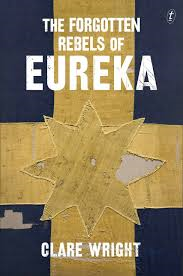 Some fabulous Australian writers have tried to redress this. Take historian Clare Wright, for example. Her marvellous book The Forgotten Rebels of Eureka won the 2014 Stella Prize. Wright reinstated women to their rightful place in the history books. Conventional accounts of the Eureka Stockade – as a founding legend for Australian democracy – were blind to the high proportion of women living and working on the Ballarat goldfields. They neglected the crucial contributions women made as agitators, petitioners, fund raisers and all-round rabble-rousers. ‘Women were there,’ Wright states in her introduction. ‘They mined for gold and much else of economic value besides. They paid taxes. They fought for their rights. And they were killed in the crossfire.’ Other non-fiction books like Australian Tragic by Jack Marx and Forgotten War by Henry Reynold place forgotten stories back on the historical record.
Some fabulous Australian writers have tried to redress this. Take historian Clare Wright, for example. Her marvellous book The Forgotten Rebels of Eureka won the 2014 Stella Prize. Wright reinstated women to their rightful place in the history books. Conventional accounts of the Eureka Stockade – as a founding legend for Australian democracy – were blind to the high proportion of women living and working on the Ballarat goldfields. They neglected the crucial contributions women made as agitators, petitioners, fund raisers and all-round rabble-rousers. ‘Women were there,’ Wright states in her introduction. ‘They mined for gold and much else of economic value besides. They paid taxes. They fought for their rights. And they were killed in the crossfire.’ Other non-fiction books like Australian Tragic by Jack Marx and Forgotten War by Henry Reynold place forgotten stories back on the historical record.
But what about historical novels? Fiction gives writers freedom to fill in gaps and explore new explanations and theories. Kate Grenville’s The Secret River and Peter Carey’s True History of the Kelly Gang are prime examples of this. Novelists can tell a fresh version of history, tales of the vanquished, the outsiders and in my case – the animals.
SYDNEY – The novelist is supremely well-equipped to present a different historical agenda. Tolstoy did this in War and Peace, his brick-sized pot-boiler, which argues his ideas about the vicious futility of power, territorial ambition and war. He includes women as central players – because novels have to be about little people if they are to speak to their readers. Natasha Rostova, his main heroine, comes to stand not only for the soul and spirit of Russia but for all that is life-giving and life-sustaining.
The novelist is supremely well-equipped to present a different historical agenda. Tolstoy did this in War and Peace, his brick-sized pot-boiler, which argues his ideas about the vicious futility of power, territorial ambition and war. He includes women as central players – because novels have to be about little people if they are to speak to their readers. Natasha Rostova, his main heroine, comes to stand not only for the soul and spirit of Russia but for all that is life-giving and life-sustaining.
The novel can also criticise history’s opinions. In The Child of Time, Josephine Tey has her detective hero turn his attention to Richard III, the last Plantagenet king of England. In his play, Richard III, Shakespeare presents the king as a villain, a child-murderer and a coward. Through her hero, Miss Tey offers an alternative view of Richard, traces the origins of Richard the villain to Sir Thomas More, he who was sacrificed to Henry VIII’s light-fingered attitude to marriage, and to Holinshed, whose Chronicles provided many stories for Shakespeare. Miss Tey notes that both men lived and worked in the service of Tudors. You will recall that Henry Tudor usurped the throne of England by defeating Richard on Bosworth field.
The novel is a polemic. Miss Tey is bent on reversing the historical view of Richard as a bad man. You only have to check out the Wikipedia entry on Richard III to see how her polemic caused consternation amongst historians, some of whom busily rejected her take on the king. For the sake of this blog, it doesn’t matter who was right and who was wrong, though Miss Tey’s argument is persuasive. What matters is that her novel, a classic of detective fiction, put a hissing, clawing cat amongst the fluttering pigeons of academic history.
JENNY-
It’s interesting how you say ‘novels have to be about little people if they are to speak to their readers.’ That of course is the beauty and strength of fiction. Most academic history does the opposite, and is filled with stories of Genghis Khan, Alexander the Great, Napoleon and various kings and queens.
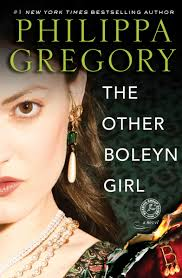 I glanced through the historical novels on Booktopia. Many titles point to their strength: The War Bride, The Other Boleyn Girl, The Maid, The Ship of Brides, The Tea Planter’s Wife, Girl of Shadows, Orphan Train, The Potato Factory, The Tailor’s Girl – the list goes on and on. Readers of these novels are drawn to tales of ordinary people.
I glanced through the historical novels on Booktopia. Many titles point to their strength: The War Bride, The Other Boleyn Girl, The Maid, The Ship of Brides, The Tea Planter’s Wife, Girl of Shadows, Orphan Train, The Potato Factory, The Tailor’s Girl – the list goes on and on. Readers of these novels are drawn to tales of ordinary people.
Tim O’Brien, who wrote novels about the Vietnam War once said: ‘A thing may happen and be a total lie; another thing may not happen and be truer than the truth.’ Before I began writing my historical novel I asked myself – Is it a great story? Will it reveal some new aspect about the people and wildlife of the period? And lastly, does it deal with issues relevant today? The answers to all three questions was yes.
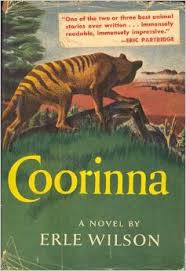 I’m writing a fresh version of history, giving a voice to the outsiders, the hunted and the animals teetering on the extinction precipice. It’s a unique story. Apart from a little gem, Coorinna, written in 1957, there is no historical fiction concerning the Thylacine. It’s time to fill the gap. My new novel will explore the forces behind the extinction of the greatest marsupial predators since Thylacoleo Carnifex, the mighty marsupial lion, vanished forty-five thousand years ago. What if those responsible weren’t the men who shot and snared them? What part did xenophobia play in their demise? And could the heroic actions of one, young fugitive alter the fate of an entire species?
I’m writing a fresh version of history, giving a voice to the outsiders, the hunted and the animals teetering on the extinction precipice. It’s a unique story. Apart from a little gem, Coorinna, written in 1957, there is no historical fiction concerning the Thylacine. It’s time to fill the gap. My new novel will explore the forces behind the extinction of the greatest marsupial predators since Thylacoleo Carnifex, the mighty marsupial lion, vanished forty-five thousand years ago. What if those responsible weren’t the men who shot and snared them? What part did xenophobia play in their demise? And could the heroic actions of one, young fugitive alter the fate of an entire species?

April 30, 2016
The Million Paws Walk

Registrations are now open for the biggest doggy play date of the year! The Million Paws Walk is the RSPCA’s most ambitious fundraising event, and a fun day for all animal lovers. Now in its 21st year, the walk is the premier event on the canine calendar. Thousands of people will walk at 17 different locations across Victoria on Sunday 15 May, 2016. Money raised through entry fees, the sale of merchandise and online fundraising will help to fund critical work in the community, including the care of more than 28,000 animals entering RSPCA shelters each year.

Dr Cam Day
The Million Paws Walk was started in 1994 in Queensland by Dr Cam Day, who believed a special event involving animals walking together would provide a fun day out for pets and their owners. It would also promote responsible pet ownership and raise much-needed funds for the RSPCA. Since then it has expanded with over 70 events held nationally.
Taking part in the Million Paws Walk is a great way to help animals in need. All animal lovers are encouraged to brush off their walking shoes, pull out their pet’s lead and bring along their ‘best friend’ to Australia’s favourite pet event. You can register and find Victorian walk locations here. People can set up their own fundraising page – a great way to make every step count. You don’t even need a dog! As well as joining fellow animal lovers and dogs on the walk, there will be entertainment, displays, stalls, giveaways and a host of other activities. There’s nothing like the sight of thousands of pooches (and various other pets) to gladden the heart of non-dog-owning dog lovers! And there will be plenty of RSPCA staff to talk to if you are interested in adopting a dog or other animal.
 Don’t worry if it rains. The walk will happen come hail, rain or shine. As an added bonus this year, if you register online and create a fundraising page, you will receive a free RSPCA Frisbee for your dog. Every dollar raised will make a difference, and help raise the target of $500,000 to prevent animal cruelty. See you there!
Don’t worry if it rains. The walk will happen come hail, rain or shine. As an added bonus this year, if you register online and create a fundraising page, you will receive a free RSPCA Frisbee for your dog. Every dollar raised will make a difference, and help raise the target of $500,000 to prevent animal cruelty. See you there!

April 24, 2016
Anachronisms
 It’s time for some writerly chit-chat with author and writing mentor Sydney Smith. We’re both making a foray into historical fiction, a genre we haven’t written before. Here we share some thoughts on anachronisms – those pesky out-of-time errors, and how to avoid them.
It’s time for some writerly chit-chat with author and writing mentor Sydney Smith. We’re both making a foray into historical fiction, a genre we haven’t written before. Here we share some thoughts on anachronisms – those pesky out-of-time errors, and how to avoid them.
JENNY –
The word anachronism is derived from the Greek word anachronous which means against time. The term refers to a person, thing or idea that exists outside its time in history, especially one that happened or existed later than the period being written about. If readers stumble over details they know to be incorrect, it distracts from the story, breaking the contract between writer and reader. Avoiding this trap can be a minefield for historical authors. Fiction set in an imagined past is bound to be anachronistic to some extent, no matter how hard a writer tries to avoid it. The trick is not to let it show.
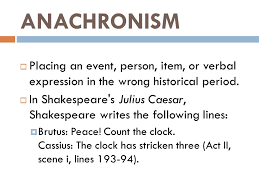 Shakespeare is famous for his anachronisms. He wrote of a clock in Julius Caesar, when clocks would not have existed. In the same play he talks of a man wearing a doublet, a garment unknown in ancient Rome, but fashionable in Shakespeare’s time. In Macbeth he talks about dollars, the wrong unit of currency. Then there is Cleopatra wanting to play billiards. Billiards was invented almost 2000 years after her reign, but was a game of luxury and masculine entertainment in Shakespeare’s era. The audience would have understood that it was an allusion to Cleopatra’s enormous political power. Such anachronisms were probably intentional, designed to help a contemporary audience engage more easily with a historical period.
Shakespeare is famous for his anachronisms. He wrote of a clock in Julius Caesar, when clocks would not have existed. In the same play he talks of a man wearing a doublet, a garment unknown in ancient Rome, but fashionable in Shakespeare’s time. In Macbeth he talks about dollars, the wrong unit of currency. Then there is Cleopatra wanting to play billiards. Billiards was invented almost 2000 years after her reign, but was a game of luxury and masculine entertainment in Shakespeare’s era. The audience would have understood that it was an allusion to Cleopatra’s enormous political power. Such anachronisms were probably intentional, designed to help a contemporary audience engage more easily with a historical period.
SYDNEY –
As I read your list of Shakespeare’s anachronisms, Jenny, I wondered if it was also a way of letting the audience know that under the thin disguise of historical fiction, he was actually writing about modern times, modern conflicts, and commenting on modern political tensions without risking imprisonment by a touchy monarch.
 The same cannot be said of the anachronisms in the manuscripts I’ve assessed over the years. In some cases, these errors are there because the writer hasn’t done their research. But more often, it’s a failure of imagination. When a writer sets a story in the early 1980s and describes a character texting messages on her phone, I’m quite sure the writer hasn’t exerted themselves enough to imagine themselves into the time of their story. They can’t imagine life without mobiles.
The same cannot be said of the anachronisms in the manuscripts I’ve assessed over the years. In some cases, these errors are there because the writer hasn’t done their research. But more often, it’s a failure of imagination. When a writer sets a story in the early 1980s and describes a character texting messages on her phone, I’m quite sure the writer hasn’t exerted themselves enough to imagine themselves into the time of their story. They can’t imagine life without mobiles.
That’s an obvious instance. A subtler example is when the writer can’t imagine life without mobiles, but knows mobiles didn’t exist in the period her story is set, the 1960s, and so she hands her characters pagers. This particular writer told me with complete confidence, ‘Pagers existed then. They were used to summon doctors to emergency cases.’ That might be true. That’s not the issue, though. The issue is that the writer has been unable to imagine life without instant contact, and so has given all her characters, none of whom are doctors, pagers to fill a gap left by a lack of imagination.
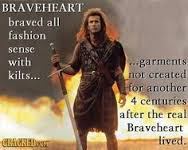 I think this points to one of the nagging problems of writing historical fiction. The writer doesn’t simply have to do their research and get the fashions, architecture, language and political scene correct. The writer has to think themselves into the world they have created. People in the past thought differently, had a different outlook, a different worldview to people of today. Many behaviours remain recognisably the same. But the way people understand the world and how it operates, what they expect, is different. Those who are old enough, have seen how quickly worldviews can change. People who were adults in the 1980s know what it’s like to set out for a date or an appointment or to meet a friend on the understanding that something might happen to derail them. They can’t phone to say something’s come up – they missed their train, they witnessed a mugging and stopped to help the victim, they tripped and sprained their ankle. I postponed for years getting a mobile, hating the idea of being in constant reach of other people. Then one day I set out to meet a friend for lunch. I missed the train. I was only ten minutes late, but she was furious because I hadn’t been able to let her know I was delayed. My attitude was the old one – it didn’t matter if I was ten minutes late. Things happen. Her attitude was the new one – no matter what, you phone to let the other person know something’s come up. The next day, I bought a mobile. Now I’m bumping up against another new assumption about the world – that everyone’s got a smart phone. I still have my old steam-powered phone, which can’t receive emails. People send images to my phone and can’t understand why I don’t respond. But that’s another story!
I think this points to one of the nagging problems of writing historical fiction. The writer doesn’t simply have to do their research and get the fashions, architecture, language and political scene correct. The writer has to think themselves into the world they have created. People in the past thought differently, had a different outlook, a different worldview to people of today. Many behaviours remain recognisably the same. But the way people understand the world and how it operates, what they expect, is different. Those who are old enough, have seen how quickly worldviews can change. People who were adults in the 1980s know what it’s like to set out for a date or an appointment or to meet a friend on the understanding that something might happen to derail them. They can’t phone to say something’s come up – they missed their train, they witnessed a mugging and stopped to help the victim, they tripped and sprained their ankle. I postponed for years getting a mobile, hating the idea of being in constant reach of other people. Then one day I set out to meet a friend for lunch. I missed the train. I was only ten minutes late, but she was furious because I hadn’t been able to let her know I was delayed. My attitude was the old one – it didn’t matter if I was ten minutes late. Things happen. Her attitude was the new one – no matter what, you phone to let the other person know something’s come up. The next day, I bought a mobile. Now I’m bumping up against another new assumption about the world – that everyone’s got a smart phone. I still have my old steam-powered phone, which can’t receive emails. People send images to my phone and can’t understand why I don’t respond. But that’s another story!
JENNY –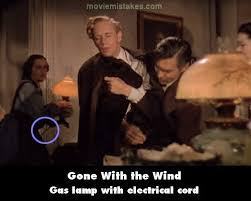 It sounds like you’d fit perfectly into a historical novel, Sydney! As you say, an anachronistic worldview can be just as disconcerting to readers as obvious lapses like mobile phones that hadn’t been invented yet. This is particularly important when writing about fairly recent periods. I intend writing a book roughly covering the years 1929 – 1960. Some people will remember these times from first-hand experience. My mother once complained about a novel set in World War 2. ‘There weren’t nylon stockings during the war,’ she said. ‘Nylon was reserved for military use, like making parachutes.’
It sounds like you’d fit perfectly into a historical novel, Sydney! As you say, an anachronistic worldview can be just as disconcerting to readers as obvious lapses like mobile phones that hadn’t been invented yet. This is particularly important when writing about fairly recent periods. I intend writing a book roughly covering the years 1929 – 1960. Some people will remember these times from first-hand experience. My mother once complained about a novel set in World War 2. ‘There weren’t nylon stockings during the war,’ she said. ‘Nylon was reserved for military use, like making parachutes.’
Anachronisms can crop up in a hundred ways – a change in the geography of a town, forgetting to check when introduced animals or plants arrived (for example, trout were only introduced to Tasmania in 1864) or simply using out of context word choices. Historical writers need to be constantly on the alert. People often say, ‘I really liked the story, but then such-and-such happened and I couldn’t get past it.’ It would be a shame to lose readers for want of a little research.

March 26, 2016
Great BYO Horse Riding Holiday

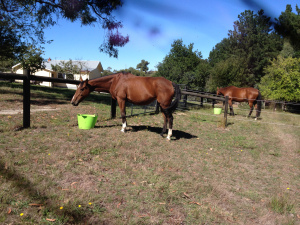
Star & Lofty enjoying breakfast!
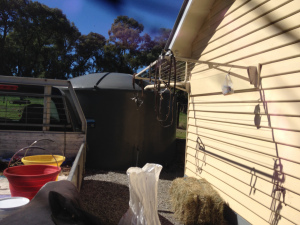 Last week my son and I took our horses on a holiday to Chericke Park at Maryknoll in Victoria – a hidden gem! This lovely cottage, nestled in the foothills of the Bunyip State Forest, offers horse and rider accommodation. It’s situated on five acres, has secure horse paddocks and you can bring your dogs too.
Last week my son and I took our horses on a holiday to Chericke Park at Maryknoll in Victoria – a hidden gem! This lovely cottage, nestled in the foothills of the Bunyip State Forest, offers horse and rider accommodation. It’s situated on five acres, has secure horse paddocks and you can bring your dogs too.
The cottage is beautifully appointed, and has everything you need to enjoy your stay. There are two large bedrooms, an open fire, barbecue and outside fire pit. It can sleep ten people, and there’s plenty of room available for camping if you want to bring a crowd. The state forest is only ten minutes away and offers stunning riding trails and bush walking. Although the cottage caters for horses and riders, it also welcomes city families and their pets to stay and enjoy the country life.
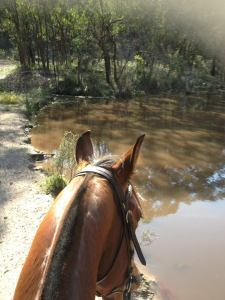 We spent hours exploring the forest trails, and the horses enjoyed their stay as much as we did. The safely fenced paddocks were chock full of sweet, juicy green pasture, and even the holding yards had grass. Guests have complete privacy, yet the owners live in the property’s main house, and are only a phone call away if needed.
We spent hours exploring the forest trails, and the horses enjoyed their stay as much as we did. The safely fenced paddocks were chock full of sweet, juicy green pasture, and even the holding yards had grass. Guests have complete privacy, yet the owners live in the property’s main house, and are only a phone call away if needed.
I highly recommend a stay if you can’t bear to leave your horse behind when you go on holiday. Didn’t get much work done on my new book though – there’s too much great riding on the doorstep. I’ve already booked another stay. Five stars![image error]


Great BYO Horse-Riding Holiday


Star & Lofty enjoying breakfast!
 Last week my son and I took our horses on a holiday to Chericke Park at Maryknoll in Victoria – a hidden gem! This lovely cottage, nestled in the foothills of the Bunyip State Forest, offers horse and rider accommodation. It’s situated on five acres, has secure horse paddocks and you can bring your dogs too.
Last week my son and I took our horses on a holiday to Chericke Park at Maryknoll in Victoria – a hidden gem! This lovely cottage, nestled in the foothills of the Bunyip State Forest, offers horse and rider accommodation. It’s situated on five acres, has secure horse paddocks and you can bring your dogs too.
The cottage is beautifully appointed, and has everything you need to enjoy your stay. There are two large bedrooms, an open fire, barbecue and outside fire pit. It can sleep ten people, and there’s plenty of room available for camping if you want to bring a crowd. The state forest is only ten minutes away and offers stunning riding trails and bush walking. Although the cottage caters for horses and riders, it also welcomes city families and their pets to stay and enjoy the country life.
 We spent hours exploring the forest trails, and the horses enjoyed their stay as much as we did. The safely fenced paddocks were chock full of sweet, juicy green pasture, and even the holding yards had grass. Guests have complete privacy, yet the owners live in the property’s main house, and are only a phone call away if needed.
We spent hours exploring the forest trails, and the horses enjoyed their stay as much as we did. The safely fenced paddocks were chock full of sweet, juicy green pasture, and even the holding yards had grass. Guests have complete privacy, yet the owners live in the property’s main house, and are only a phone call away if needed.
I highly recommend a stay if you can’t bear to leave your horse behind when you go on holiday. Didn’t get much work done on my new book though – there’s too much great riding on the doorstep. I’ve already booked another stay. Five stars! :)


March 19, 2016
One Character, Two Conflicting Goals

by PeaceWolfCreations
Stories need conflict, we all know that. Usually this comes about via a protagonist and antagonist with opposing goals. One man wants to win the battle and another man wants to stop him. This is the simplest version. But what about when opposing goals are contained within the same person? This happens when a character desperately wants two things that are mutually exclusive. It echoes life, and allows for rich characterisation when the choice is finally made. Readers really feel for a hero in the throes of this kind of tortured inner turmoil. If done well, the readers themselves become torn in two directions. They take sides, change their minds, feel the frustration. It’s an unbeatable recipe for a page-turning read, and the engine room of many popular novels.
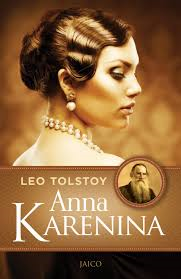 Conflicting goals lie at the heart of Anna Karenina. Anna wants both her adulterous lover Vronsky and her child. In nineteenth century Russia she can’t have both. Will she follow her burning passion whatever the cost? Or will she return to a safe, suffocating marriage for the sake of her child? She chooses Vronsky. Her choice destroys their love and leads to ultimate disaster. Tolstoy uses action, thoughts, dialogue and backstory to emphasise the pull of these conflicting goals. They seem equally matched, until the fatal choice is made.
Conflicting goals lie at the heart of Anna Karenina. Anna wants both her adulterous lover Vronsky and her child. In nineteenth century Russia she can’t have both. Will she follow her burning passion whatever the cost? Or will she return to a safe, suffocating marriage for the sake of her child? She chooses Vronsky. Her choice destroys their love and leads to ultimate disaster. Tolstoy uses action, thoughts, dialogue and backstory to emphasise the pull of these conflicting goals. They seem equally matched, until the fatal choice is made.
Other well-known examples are Twilight by Stephanie Meyer – Bella wants to be with Edward, but she also wants to live.
Water For Elephants by Sara Gruen – Jacob wants to keep his job at the circus, but he also wants to protect the elephants
Hamlet by William Shakespeare – Hamlet wants to avenge his father by killing the king, but he also wants to fulfil his duty as a prince by protecting the king and the stability of the kingdom
The Hunger Games by Suzanne Collins – Katniss wants to win the games so she can live, but if she wins, her friend Peeta will die. She wants him to live too.
 The greater the war within, the more compelling your story will be. Donald Maass, in Writing the Breakout Novel Workbook, sets out a good way to create conflicting goals. ‘Ask what does your hero most want in the novel – his story goal. Then ask what’s the opposite of that, or mutually exclusive to it? Give your hero an equally compelling reason to not pursue his goal. He wants both at once, but can’t have them both. The story will play out in how the hero pursues these opposing desires until the conflict is resolved, one way or another.’
The greater the war within, the more compelling your story will be. Donald Maass, in Writing the Breakout Novel Workbook, sets out a good way to create conflicting goals. ‘Ask what does your hero most want in the novel – his story goal. Then ask what’s the opposite of that, or mutually exclusive to it? Give your hero an equally compelling reason to not pursue his goal. He wants both at once, but can’t have them both. The story will play out in how the hero pursues these opposing desires until the conflict is resolved, one way or another.’

March 5, 2016
Women Writers and Aussie Rural Fiction
 Next Tuesday is International Women’s Day. This year’s theme is gender parity. Worldwide, women contribute more than their fair share to social, economic, cultural and political life. Yet progress towards gender parity is slow, including in the literary world. Australia’s Stella Prize and Britain’s Baileys Prize are attempts to redress this inbalance. In one literary field however, I can proudly say the achievements of women authors far outstrip men – the hugely popular genre of Australian Rural Fiction
Next Tuesday is International Women’s Day. This year’s theme is gender parity. Worldwide, women contribute more than their fair share to social, economic, cultural and political life. Yet progress towards gender parity is slow, including in the literary world. Australia’s Stella Prize and Britain’s Baileys Prize are attempts to redress this inbalance. In one literary field however, I can proudly say the achievements of women authors far outstrip men – the hugely popular genre of Australian Rural Fiction
 The books in this genre are overwhelmingly written by women, most of us living and working on the land. (Head over to the Australian Rural Fiction website and see for yourself. You’ll find many current and upcoming releases) Publishers point to this as a new phenomenon, but of course, Australian rural literature written by women is not new. Quite the contrary, it’s steeped in tradition. From Henry Handel Richardson’s Fortunes Of Richard Mahoney, Nancy Cato’s All The Rivers Run through to Colleen McCullough’s Thorn Birds, the drama, difficulties and romance of the Australian bush has long been the stuff of great narrative tales.
The books in this genre are overwhelmingly written by women, most of us living and working on the land. (Head over to the Australian Rural Fiction website and see for yourself. You’ll find many current and upcoming releases) Publishers point to this as a new phenomenon, but of course, Australian rural literature written by women is not new. Quite the contrary, it’s steeped in tradition. From Henry Handel Richardson’s Fortunes Of Richard Mahoney, Nancy Cato’s All The Rivers Run through to Colleen McCullough’s Thorn Birds, the drama, difficulties and romance of the Australian bush has long been the stuff of great narrative tales.
 From the earliest days of white settlement and before, the bush was central to how we became Australian, how we identified ourselves as Australian. Yet during the second half of the twentieth century, it fell out of literary favour. We weren’t a bush people any more. We lived around the urban coastal fringe, and saw ourselves as urbane, cosmopolitan and civilised. But thanks to a talented cohort of women authors, the bush once more looms large in the literary landscape.
From the earliest days of white settlement and before, the bush was central to how we became Australian, how we identified ourselves as Australian. Yet during the second half of the twentieth century, it fell out of literary favour. We weren’t a bush people any more. We lived around the urban coastal fringe, and saw ourselves as urbane, cosmopolitan and civilised. But thanks to a talented cohort of women authors, the bush once more looms large in the literary landscape.
Why the massive popularity of this genre, that regularly outsells all others? I believe readers are craving a relationship to country. They’re asking the age-old question – what is it that makes us Australian? And the simple answer is, that we come from this place. Our identity comes from the continent itself. And especially that aspect of Australia that is different to other places. That doesn’t mean our cities. That means regional Australia. That means the bush. That means the climate, landscape and geology that has shaped our culture.
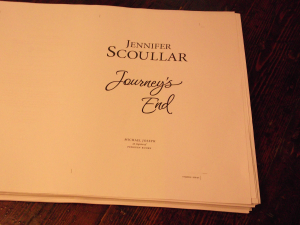 I’m so very proud to be part of this immensely supportive group of Australian women writers. I’ve just finished proofreading the pages for my new book, Journey’s End, out with Penguin at the end of May. It’s set on the Great Eastern Escarpment, and pays homage to the men and women who strive to conserve and restore our natural environment. Thanks to the hard work of so many talented women, the story has a ready audience. So let’s hear it for the Aussie rural writers – a shining example of achievement on International Women’s Day!
I’m so very proud to be part of this immensely supportive group of Australian women writers. I’ve just finished proofreading the pages for my new book, Journey’s End, out with Penguin at the end of May. It’s set on the Great Eastern Escarpment, and pays homage to the men and women who strive to conserve and restore our natural environment. Thanks to the hard work of so many talented women, the story has a ready audience. So let’s hear it for the Aussie rural writers – a shining example of achievement on International Women’s Day!


